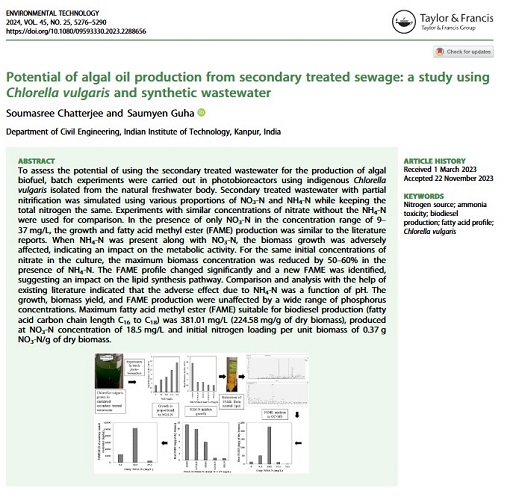- K. Dev & C. K. Sahu, 2024. Instability analysis of the effects of geothermal gradients on CO2-brine convection in anisotropic aquifers. PHYSICAL REVIEW FLUIDS 9, 103803
https://doi.org/10.1103/PhysRevFluids.9.103803
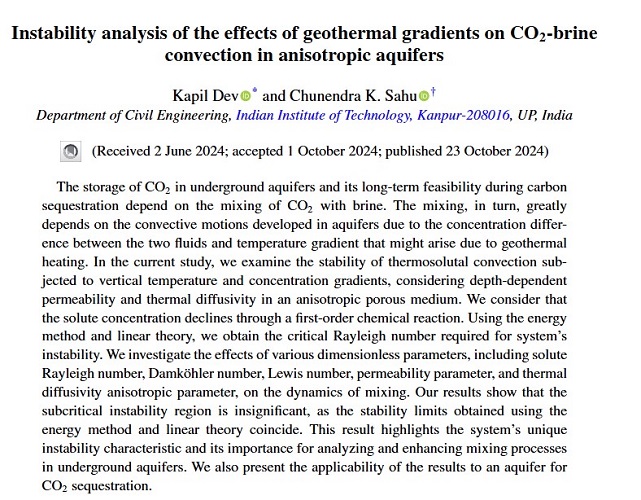
- A. Singh & C. K. Sahu, 2024. Investigation of dense plumes in porous media using CsNO3 solute and phenolphthalein tracer. JOURNAL OF ENVIRONMENTAL RADIOACTIVITY 280, 107558
https://doi.org/10.1016/j.jenvrad.2024.107558
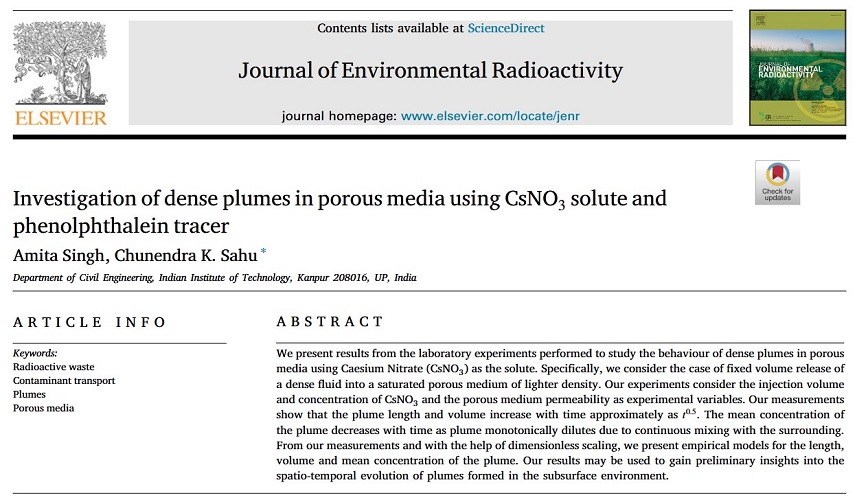
- Kumar, S., & Ojha, R. (2024). A scaling-based model to describe temporal variability in soil hydraulic properties. Journal of Hydrology, 636, 131265.
https://doi.org/10.1016/j.jhydrol.2024.131265
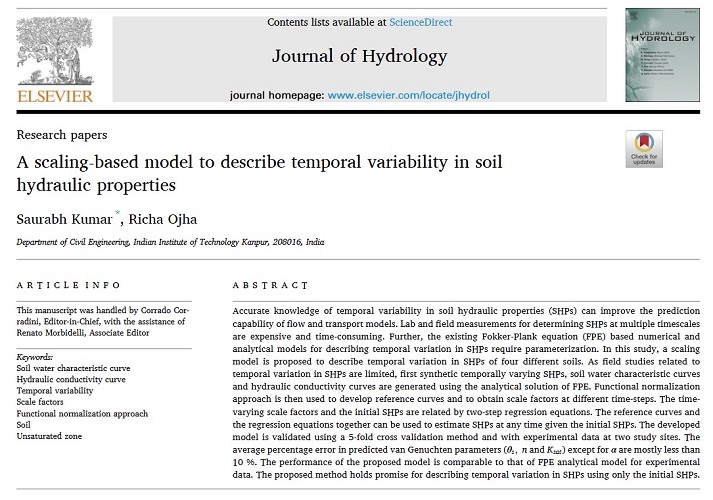
- Yetbarek, E., & Ojha, R. (2021). Experimental evaluation of different subsurface water movement models in an agricultural field with soil heterogeneity. Journal of Hydrology, 599, 126298.
https://doi.org/10.1016/j.jhydrol.2021.126298
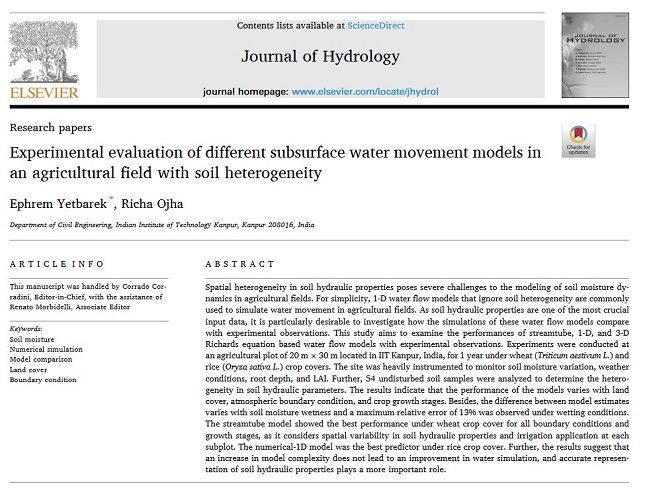
- Kumar, A., & Pahar, G. (2024). Macroscopic modeling of urban flood inundation through areal-averaged Shallow-Water-Equations. Advances in Water Resources, 104755.
https://doi.org/10.1016/j.advwatres.2024.104755
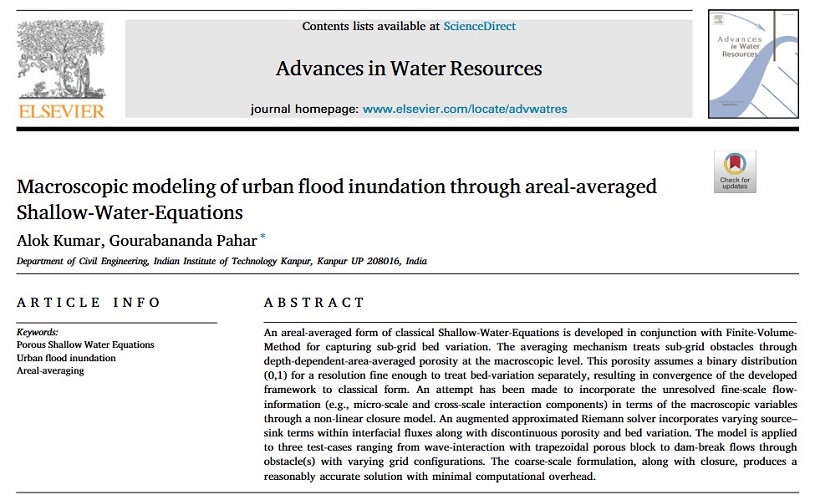
- Bhat, N. U. H., & Pahar, G. (2024). Coupled-ISPH Framework for Modeling Tsunamis Induced by Landslides: Subaerial to Submerged. Journal of Hydraulic Engineering, 150(3), 04024009.
https://doi.org/10.1061/JHEND8.HYENG-13697
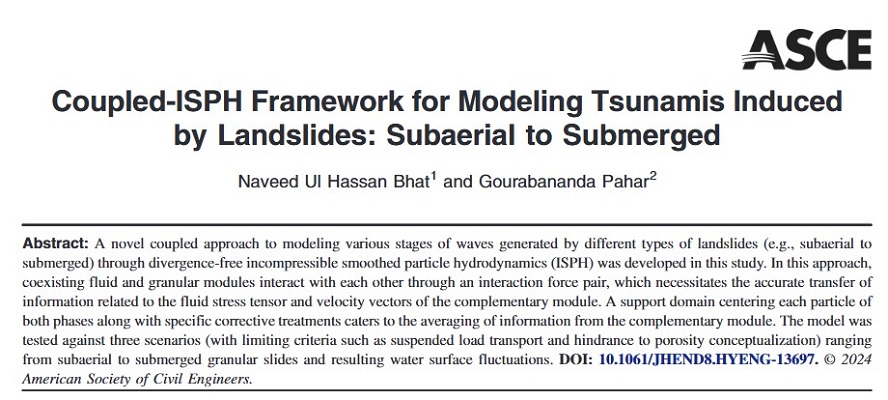
- Bhat, N. U. H., & Pahar, G. (2022). Depth-averaged coupling of submerged granular deformation with fluid flow: An augmented HLL scheme. Journal of Hydrology, 606, 127364.
https://doi.org/10.1016/j.jhydrol.2021.127364
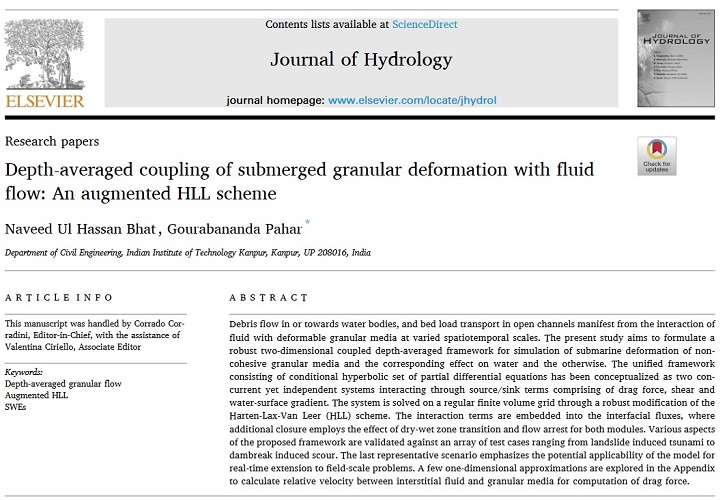
- Deshpande, P., Tripathi, S., & Bhattacharya, A. (2024). Bayesian Neural Networks for Satellite Fog Detection: Quantifying Epistemic and Aleatoric Uncertainties. Remote Sensing in Earth Systems Sciences, 1-19.
https://doi.org/10.1007/s41976-024-00155-7
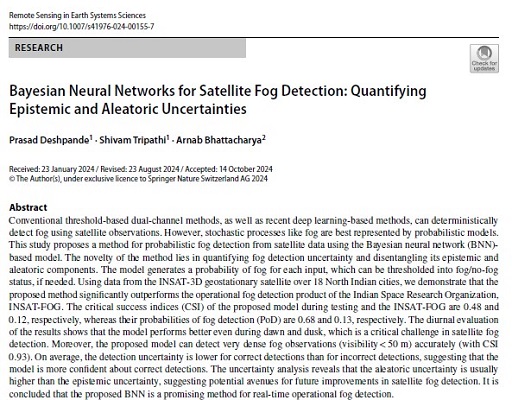
- Majid, S. A., Tripathi, S., & Das, D. (2023). Experimental Study of Pressure Flow due to Vertical Contraction Using Particle Image Velocimetry. Journal of Hydraulic Engineering, 149(7), 04023016.
https://doi.org/10.1061/JHEND8.HYENG-13397
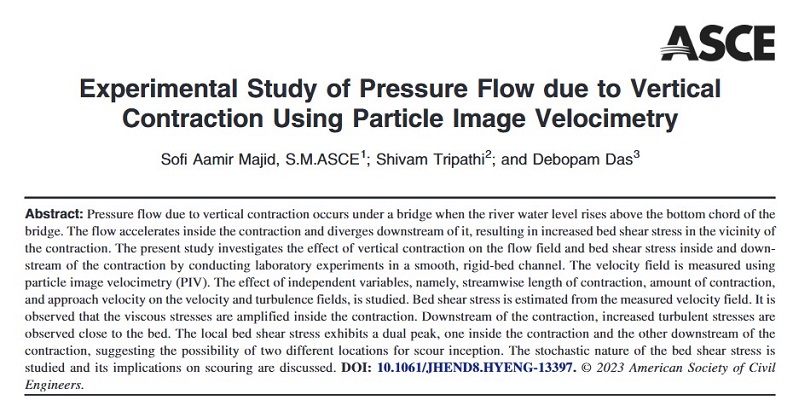
- Adla, S., Bruckmaier, F., Arias-Rodriguez, L. F., Tripathi, S., Pande, S., & Disse, M. (2024). Impact of calibrating a low-cost capacitance-based soil moisture sensor on AquaCrop model performance. Journal of Environmental Management, 353, 120248.
https://doi.org/10.1016/j.jenvman.2024.120248
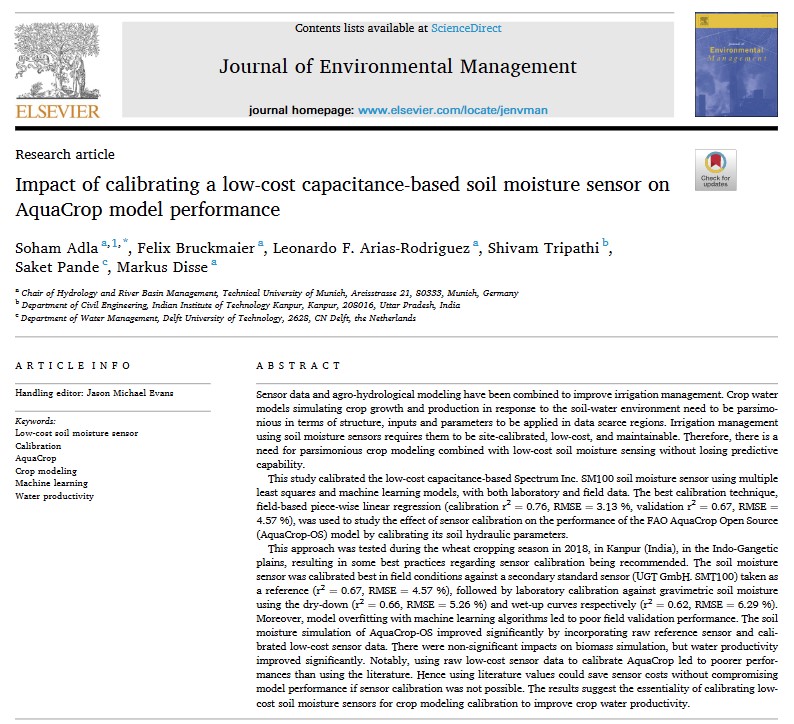
- Dar, J. A., & Apurv, T. (2024). Spatiotemporal characteristics and physical drivers of heatwaves in India. Geophysical Research Letters, 51, e2024GL109785.
https://doi.org/10.1029/2024GL109785
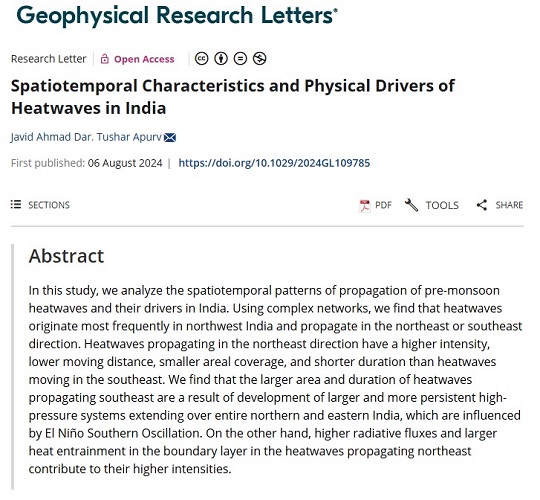
- Chatterjee, S., & Guha, S. (2024). Potential of algal oil production from secondary treated sewage: a study using Chlorella vulgaris and synthetic wastewater. Environmental Technology, 45(25), 5276-5290.
